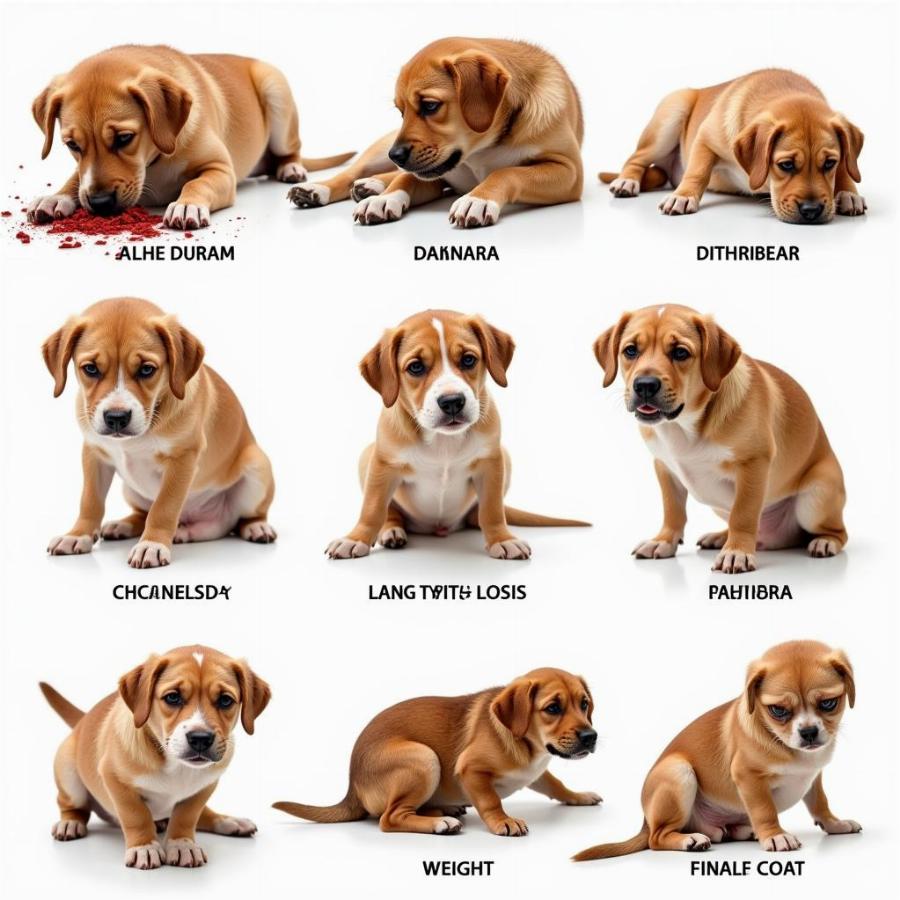If your dog is turning up its nose at regular meals but gobbling down treats, you’re not alone. This is a common issue that many dog owners face, leaving them puzzled and concerned about their furry friend’s health. “Dog won’t eat food but will eat treats” is a frustrating situation, but understanding the reasons behind this picky eating habit is the first step towards resolving it. This article will explore the potential causes, offer practical solutions, and guide you towards getting your canine companion back on track with healthy eating.
Why Your Dog Prefers Treats Over Food
Several factors can contribute to a dog’s preference for treats over their regular food. Sometimes, it’s a simple matter of taste preference, much like us humans having a favorite snack. Other times, the underlying cause could be more complex, ranging from medical issues to behavioral patterns.
The Allure of Treats: Taste, Texture, and Variety
Treats often boast enticing flavors, textures, and aromas designed to be irresistible. This can make regular kibble seem bland in comparison. Imagine having to eat plain oatmeal every day while being offered delicious, bite-sized pieces of bacon. It’s easy to see why treats might win out!
Medical Reasons for Picky Eating
Sometimes, a dog’s disinterest in food can stem from underlying medical conditions. Dental problems, gastrointestinal issues, or even infections can make eating painful or uncomfortable. If your dog’s eating habits change suddenly, consult a veterinarian to rule out any medical concerns.
Behavioral Issues and Picky Eating Habits
Behavioral issues can also play a role in picky eating. If your dog has learned that refusing food eventually leads to being offered tastier treats, they may continue this behavior. Overfeeding treats can also lead to a full belly and a lack of appetite for regular meals.
Solutions for Picky Eaters
Addressing picky eating requires a consistent and patient approach. Here are some practical solutions to help your dog regain their appetite for regular food:
Establish a Consistent Feeding Schedule
Feed your dog at the same times each day and remove the food bowl after 15-20 minutes, regardless of whether they’ve eaten. This helps establish a routine and prevents grazing throughout the day.
Make Mealtime More Appealing
Sometimes, a little variety can go a long way. Try adding warm water or low-sodium broth to their kibble to enhance the aroma and soften the texture. You can also rotate between different protein sources to keep things interesting.
Reduce or Eliminate Treats
While treats can be a useful training tool, overdoing it can contribute to picky eating. Reduce the number of treats offered, or use small pieces of their regular kibble as training rewards.
Incorporate Physical Activity
Regular exercise can help stimulate your dog’s appetite. A brisk walk or playtime before meals can make them more receptive to eating.
Gradual Transition to New Food
If you’re switching to a new dog food, do it gradually. Mix a small amount of the new food with the old food, slowly increasing the proportion of new food over several days.
When to Consult a Veterinarian
If your dog’s picky eating is accompanied by other symptoms such as vomiting, diarrhea, lethargy, or weight loss, it’s essential to consult a veterinarian. These could be signs of an underlying medical condition requiring prompt attention.
Is My Dog Sick? Recognizing Red Flags
Pay attention to any changes in your dog’s behavior, including their energy levels, bowel movements, and overall demeanor. A sudden and drastic change in appetite could indicate a health problem.
 Dấu hiệu chó bị bệnh
Dấu hiệu chó bị bệnh
Conclusion
A dog that won’t eat food but will eat treats can be a cause for concern, but with patience and the right approach, you can help them develop healthy eating habits. By understanding the potential causes and implementing the suggested solutions, you can encourage your furry friend to enjoy their meals once again. Remember, consistency and patience are key! Don’t hesitate to consult a veterinarian if you suspect an underlying medical issue.
FAQ
- Why does my dog only eat treats? Treats are often more palatable than regular food. Your dog may also have learned that refusing food leads to treats.
- How can I get my dog to eat its food? Establish a feeding schedule, reduce treats, and try making the food more appealing.
- When should I worry about my dog not eating? If your dog’s refusal to eat is accompanied by other symptoms like vomiting or lethargy, consult a vet.
- Can I mix treats with my dog’s food? While this might tempt them initially, it’s best to avoid this as it can reinforce picky eating.
- How long can a dog go without eating? Consult your vet if your dog hasn’t eaten in more than 24 hours.
Beaut Dogs is your trusted source for all things canine, providing expert advice and helpful resources on dog care, breeds, and everything in between. Visit Beaut Dogs today to learn more. When you need support, please contact Email: [email protected] to get detailed and accurate answers from Beaut Dogs.